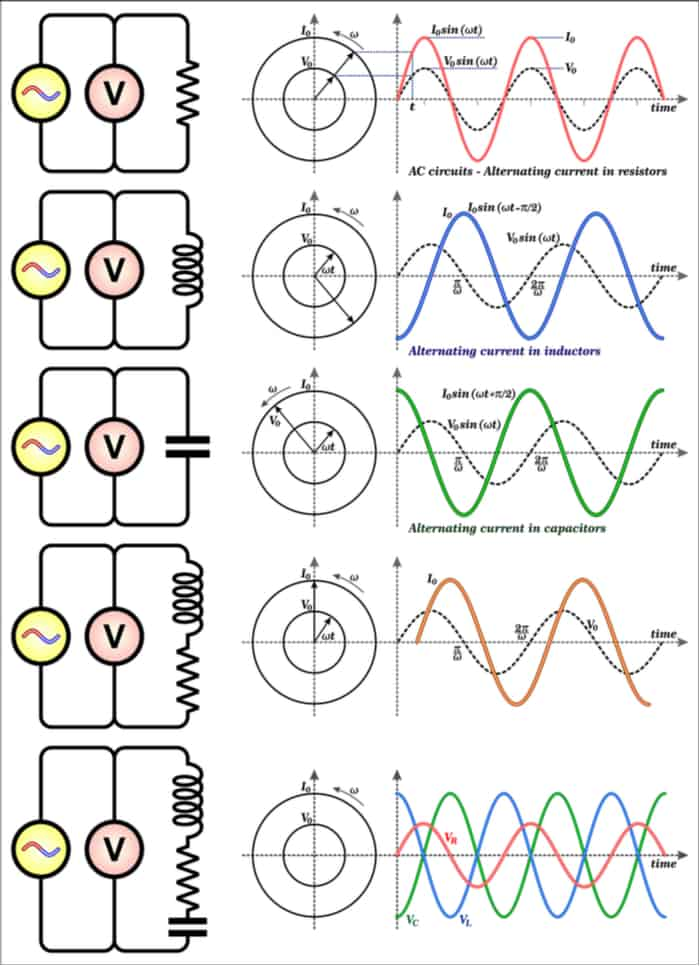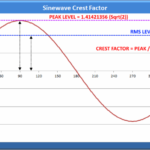What is Phase Angle in electricity?
Phase angle refers to the difference in timing between two different signals or waveforms. In the context of electricity, it is used to describe the relationship between voltage and current in an AC (alternating current) circuit. In such a circuit, the voltage and current waveforms are constantly changing over time, with each waveform reaching its peak and then returning to zero before starting over again.
The phase angle between the voltage and current waveforms is important because it determines the amount of power that is being transferred through the circuit. When the voltage and current waveforms are in phase, meaning that they reach their peaks and zero points at the same time, the power being transferred through the circuit is maximized. However, when the voltage and current waveforms are out of phase, the power being transferred is reduced.
How to calculate Phase angle?
The phase angle between two sinusoidal electrical signals can be calculated using the following formula:
Φ = cos^-1((P)/(V × I))
where Φ is the phase angle, P is the real power (in watts), V is the RMS voltage (in volts), and I is the RMS current (in amperes).
Note that this formula assumes that the voltage and current are sinusoidal and that the circuit is purely resistive (i.e., does not have any reactive components such as capacitors or inductors). If the circuit does have reactive components, then the phase angle will need to be calculated using a more complex formula that takes into account the reactive power as well.
The phase angle can be measured using an oscilloscope or a phase meter, which directly measures the time delay between the voltage and current waveforms. This is often a more accurate and reliable method than calculating the phase angle using mathematical formulas.
One of the main reasons why reactive energy increases is due to the presence of reactive components in an electrical circuit, such as capacitors and inductors. These components store electrical energy and release it back into the circuit as the electrical current flows through them. This causes the voltage and current waveforms to become out of phase, resulting in the storage and release of reactive energy.
Another factor that can cause an increase in reactive energy is changes in the electrical load. When the load on the electrical system changes, the reactive power required to maintain the voltage in the circuit may also change. For example, if a large motor is turned on, the reactive power required to start and run the motor may cause an increase in reactive energy in the circuit.
Changes in the voltage supplied to the circuit can also cause an increase in reactive energy. When the voltage supplied to the circuit changes, the reactive power required to maintain the voltage may also change. For example, if the voltage supplied to the circuit decreases, the reactive power required to maintain the voltage may increase, causing an increase in reactive energy in the circuit.
To manage the effects of reactive energy and prevent an increase in reactive power, power companies and electrical engineers use a variety of techniques, such as reactive power compensation and power factor correction. These techniques involve adding reactive components to the circuit or adjusting the voltage and current waveforms to ensure that they are in phase, which helps to eliminate the reactive energy from the circuit. By properly managing reactive energy, electrical engineers can help to ensure that our electrical systems are reliable, efficient, and safe.
What happen when Phase angle increases?
When the phase angle between the voltage and current in an AC circuit increases, it indicates that the two signals are increasingly out of phase with each other. This can have several consequences, including:
- Reduced Power Factor: The power factor of the circuit decreases as the phase angle between voltage and current increases. This means that the circuit becomes less efficient in terms of transferring power from the source to the load.
- Increased Reactive Power: As the phase angle increases, the circuit’s reactive power also increases. This is because the current is increasingly out of phase with the voltage, requiring more energy to be stored and released by reactive components such as capacitors and inductors.
- Increased Voltage Drop: When the phase angle is large, the voltage drop across the circuit’s components increases. This can lead to a reduction in the overall voltage level, which can impact the performance of connected devices.
- Overheating of Components: When the phase angle is large, the circuit’s components may experience increased heating due to the higher levels of reactive power and voltage drop. This can lead to reduced component lifespan or even failure in extreme cases.
Overall, an increasing phase angle can have a negative impact on the efficiency and performance of an AC circuit, and it is important to ensure that the circuit is properly designed and maintained to minimize the effects of phase angle.
How to improve Phase angle?
There are several ways to improve the phase angle in an AC circuit, including:
- Using Power Factor Correction: Power factor correction involves adding capacitors to the circuit to reduce the reactive power and improve the power factor. This helps to reduce the phase angle and make the circuit more efficient.
- Using Synchronous Motors: Synchronous motors have a power factor that can be adjusted by adjusting the field excitation. By using synchronous motors in the circuit, the power factor can be improved, and the phase angle can be reduced.
- Using Phase Shifting Transformers: Phase shifting transformers can be used to adjust the phase angle between the voltage and current. This can be useful in situations where the circuit design cannot be changed or where there are issues with voltage drop or reactive power.
- Balancing Loads: Imbalanced loads can contribute to an increased phase angle. By balancing the loads across the circuit, the phase angle can be reduced, and the circuit can be made more efficient.
- Eliminating Harmonics: Harmonics can also contribute to an increased phase angle. By using harmonic filters or reducing the amount of harmonics in the circuit, the phase angle can be improved.
Overall, improving the phase angle in an AC circuit requires a comprehensive approach that may involve a combination of these strategies. It is important to consult with a qualified electrical engineer or technician to determine the most appropriate solution for a given circuit.







